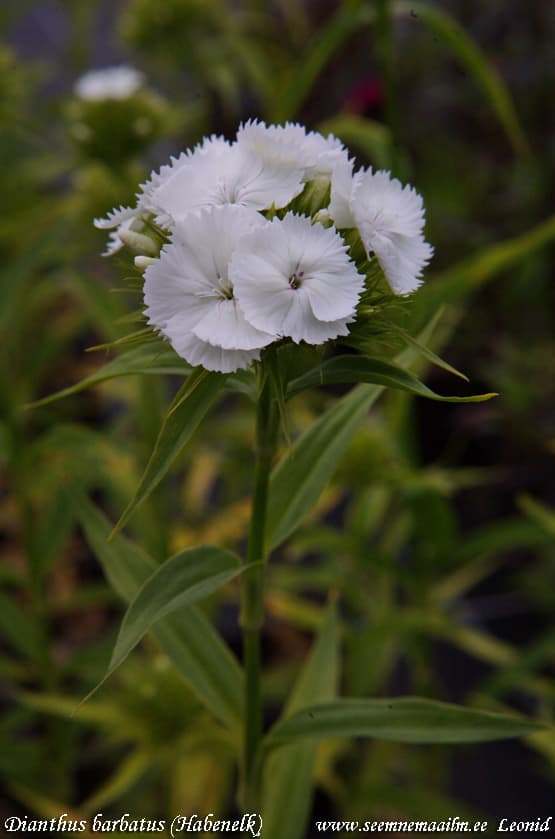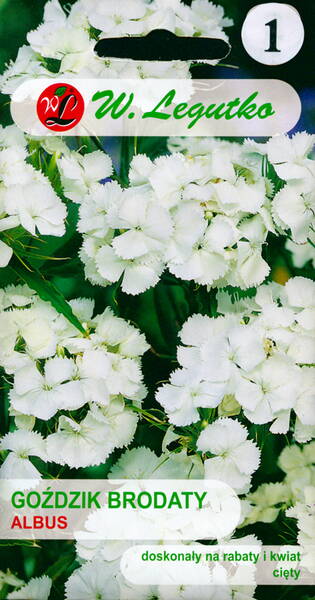A herbaceous plant with numerous gnarled stems. The stems are straight, strong, the leaves are sessile, lanceolate with a gray-blue tint.
The flowers are velvety, fragrant, snow-white, collected in dense corymbose inflorescences. Winter-hardy, prefers sunlit areas with light fertile soils, can grow in partial shade.
Propagated by sowing seeds in the ground in spring or before winter. The optimal temperature for seed germination is +20°C. Shoots appear in 7-10 days. Seedlings are planted or pulled out, maintaining a distance of 5 cm between them. The grown plants are planted in a permanent place.
Used for flower beds, borders and high-quality cuttings.

Physical Characteristics: Perennial growing to 0.6m. It is hardy to zone 4 and is not frost tender. It is in flower from July to August, and the seeds ripen from August to September. The scented flowers are hermaphrodite (have both male and female organs) and are pollinated by Bees and Lepidoptera (Moths & Butterflies). It is noted for attracting wildlife. We rate it 1 out of 5 for usefulness. The plant prefers light (sandy), medium (loamy) and heavy (clay) soils and requires well-drained soil. The plant prefers acid, neutral and basic (alkaline) soils. It cannot grow in the shade. It requires dry or moist soil. Habitats and Possible Locations Meadow, Woodland, Cultivated Beds, Sunny Edge. Cultivation details Prefers a rich well-drained loamy soil in a sunny position, but succeeds in most soils including dry ones. A very ornamental plant, its flowers are very attractive to butterflies and moths. The flowers have a strong clove-like scent. Plants self-sow freely when grown in a suitable position. Although the Sweet William is a perennial species, it is quite short-lived and degenerates after its second year. It is best treated as a biennial in the garden. Propagation Seed - sow May/June in a cold frame. The seed usually germinates in 2 - 3 weeks. When they are large enough to handle, prick the seedlings out into individual pots and plant them out in the summer or autumn. The seed can also be sown thinly in an outdoor seedbed in late spring, the young plants being planted out in late spring or the autumn. Cuttings of half-ripe shoots, July in a frame. Division in September. Larger clumps can be replanted direct into their permanent positions, though it is best to pot up smaller clumps and grow them on in a cold frame until they are rooting well. Plant them out in the spring.













